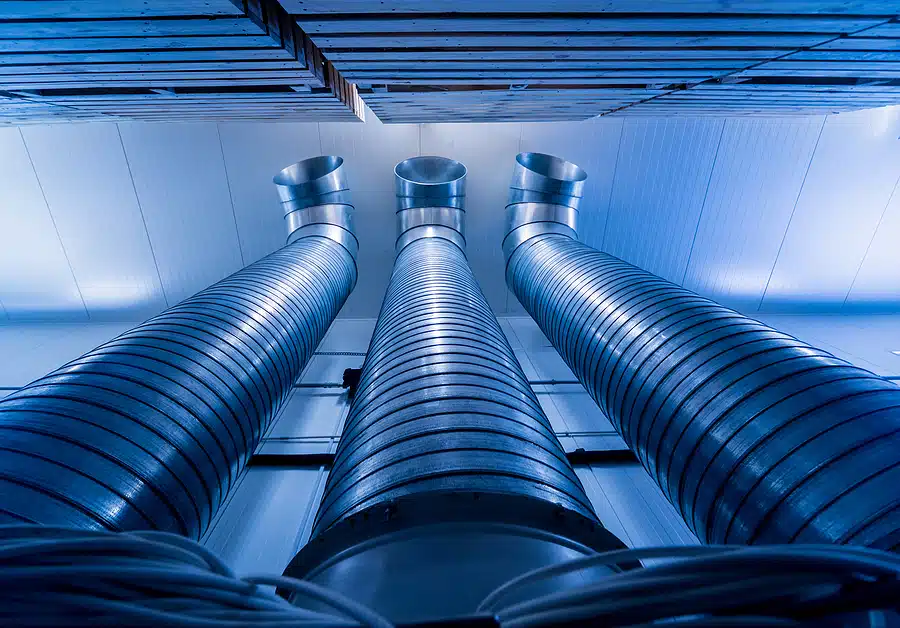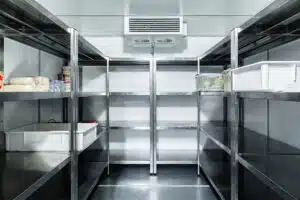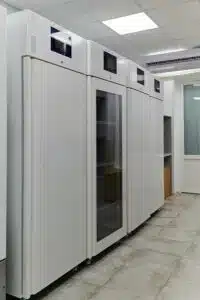How to Choose the Right Size Commercial Refrigeration System for Your Business

Commercial refrigeration is the backbone of many businesses, from restaurants and supermarkets to bakeries and flower shops. It’s not just about keeping your products cool; it’s also about efficiency, cost-effectiveness, and functionality. One of the biggest questions in getting a commercial refrigeration system for your business is the size you need to get. Which one is the perfect size based on your needs? Here are the things that you need to know.
Understanding Your Business Needs
There’s no one-size-fits-all solution in terms of commercial refrigeration systems, as the type of system you need will depend on various factors. We at Elite Refrigeration help you to break down what you should consider:
- Type of Business: Are you running a restaurant, a supermarket, a bakery, or something entirely different? Different businesses have different refrigeration requirements based on the nature of their products and customer demands.
- Inventory Size and Type: Take stock of your inventory. Do you have a vast assortment of items or just a few? Some items may require specific temperature ranges, so understanding your inventory is key.
- Required Temperature Ranges: Not all refrigeration systems maintain the same temperature range. For instance, a flower shop may need different cooling conditions than a meat storage unit in a restaurant. Knowing the exact temperature requirements for your products is essential.
- Future Expansion Plans: Are you planning to expand your business in the near future? If so, it’s wise to consider your potential growth when selecting a refrigeration system. You don’t want to outgrow your system too quickly.
By getting a handle on these factors, you’ll be well on your way to choosing the right size commercial refrigeration system for your business.
Calculating Your Cooling Capacity
Calculating your cooling capacity is a vital step because it ensures your refrigeration system can effectively maintain the required temperature, even during peak operation. Here are the ways on how you can calculate your specific cooling capacity needs:
Understanding Cooling Capacity
Cooling capacity refers to the amount of heat a refrigeration system can remove from an enclosed space in a given time. In simpler terms, it’s the system’s ability to keep your products at the desired temperature. If your system doesn’t have enough cooling capacity, it will struggle to maintain the necessary temperatures, potentially leading to product spoilage and energy inefficiency.
Factors Affecting Cooling Capacity
Several factors can impact the cooling capacity required for your business:
Insulation: The quality of your facility’s insulation plays a significant role. Well-insulated spaces are more energy-efficient and require less cooling capacity. Ensure your building is adequately insulated to reduce the workload on your refrigeration system.
Door Frequency: How often do your employees open and close refrigerator or freezer doors? Frequent door openings introduce warm air, increasing the workload on the system. Be mindful of this when calculating cooling capacity.
Ambient Temperature: The temperature of the surrounding environment matters. If your business is located in an area with high ambient temperatures, your refrigeration system will need more cooling capacity to offset the heat.
Calculating Cooling Capacity
To calculate your specific cooling capacity needs, you can use the following general formula:
Cooling Capacity (BTU/hr) = Volume of Space (cubic feet) x Temperature Difference (°F) x 1.1
Volume of Space: Measure the total cubic footage of the area where your refrigeration system will be used. This includes both storage and display areas.
Temperature Difference: Determine the temperature range needed to store your products safely. For example, a restaurant might require a cooler at 36°F, while a frozen food section in a supermarket might need temperatures as low as -10°F.
1.1: This is a factor to account for various conditions and variables. It helps ensure your calculation is more accurate.
Once you have these values, plug them into the formula to find the required cooling capacity in BTUs per hour. Remember that this is a basic calculation, and it’s always a good idea to consult with a refrigeration expert to confirm your needs.
Types of Commercial Refrigeration Systems
There are various types of commercial refrigeration systems available. Each is designed for specific purposes, so choosing the right one is essential for efficient operation.
1. Reach-in Refrigerators and Freezers
These are the most common types of commercial refrigeration systems and are often found in restaurant kitchens, convenience stores, and small businesses. They come in various sizes and configurations, from single-door units to multi-door options.
Suitable Businesses: Ideal for restaurants, cafes, and businesses with moderate storage needs.
Advantages: Convenient access to items, efficient storage organization, and they fit well in tight spaces.
2. Walk-in Coolers and Freezers
Walk-in units are large, room-sized refrigerators or freezers. They offer ample storage space and are commonly used in grocery stores, restaurants, and warehouses.
Suitable Businesses: Excellent for businesses with significant storage requirements and a wide range of products.
Advantages: Maximum storage capacity, versatility, and the ability to walk inside for easy access and inventory management.
3. Display Cases
Display cases are designed for showcasing products while keeping them at the desired temperature. They come in various styles, including refrigerated deli cases, bakery cases, and beverage coolers.
Suitable Businesses: Perfect for businesses where product visibility is crucial, such as bakeries, delis, and beverage shops.
Advantages: Attractive presentation of products, easy customer access, and ideal for impulse purchases.
4. Undercounter Refrigerators and Freezers
Undercounter units are compact refrigeration systems that fit beneath countertops or workspaces. They’re often used in bars, kitchens, and prep areas.
Suitable Businesses: Great for small spaces, bars, and areas where quick access to chilled items is essential.
Advantages: Space-saving, efficient use of available space, and easy access to ingredients.
5. Refrigerated Merchandisers
Merchandisers are designed for displaying products to attract customers’ attention. They’re commonly found in convenience stores, supermarkets, and retail outlets.
Suitable Businesses: Ideal for businesses that rely on product visibility and impulse purchases.
Advantages: Enhanced product visibility, eye-catching displays, and increased sales potential.
Choosing the right type of commercial refrigeration system depends on your business’s specific requirements, available space, and the type of products you store or display. Consider the information you’ve gathered about your business needs and cooling capacity, and match it with the most suitable system from the options above.
Budget Considerations
Balancing the quality of the system with affordability is crucial for making a sound financial decision for your business. Here are some of the steps you can take to make the most out of your budget:
Setting Your Budget
Determine the total budget you can allocate for your commercial refrigeration system. This should include not only the cost of purchasing the system but also installation, maintenance, and any necessary modifications to your facility.
Quality vs. Affordability
Understand that while it’s tempting to opt for the least expensive option, cutting corners on quality may lead to higher operating costs and maintenance expenses in the long run. Focus on finding a system that strikes the right balance between quality and affordability.
Total Cost of Ownership (TCO)
Consider the total cost of ownership rather than just the initial purchase price. TCO includes ongoing operating costs, maintenance expenses, and energy consumption. An initially more expensive, energy-efficient system may prove more cost-effective over time.
Financing Options
Investigate financing options available for commercial refrigeration systems. Some suppliers or manufacturers may offer financing plans that can help ease the financial burden of the initial investment.
Return on Investment (ROI)
Calculate the potential return on investment for each system you’re considering. This involves estimating how long it will take for the energy savings and operational efficiencies to pay off the initial investment.
Assess Long-Term Savings
Compare the long-term savings potential of energy-efficient systems with their upfront costs. While they may have a higher initial price tag, they can lead to substantial savings over the life of the system.
Explore Rebates and Incentives
Check if there are any local or federal rebates, tax incentives, or energy efficiency programs that can help offset the cost of an energy-efficient refrigeration system. These can significantly impact your budget considerations.
Consult with Experts
Engage with refrigeration experts or consultants who can provide guidance on budget-friendly options that meet your specific needs. They can help you make an informed decision based on your budget constraints.
Remember that your commercial refrigeration system is a long-term investment that plays a crucial role in your business’s daily operations. It’s essential to strike a balance between staying within your budget and ensuring you get a system that meets your needs efficiently.
Take the Elite Path – Contact Us!
Ready to experience top-notch service for your commercial refrigeration system needs in Bronx and Westchester Counties? Choose Elite Refrigeration Services Inc. and discover true service excellence!
Why Choose Elite Refrigeration Services?
Professional: Our team boasts over 40 years of combined experience in the HVAC/R industry.
Affordable: We offer quality services and installations at competitive prices.
Knowledgeable: Our technicians are well-trained and stay up-to-date with industry technology and service changes.
Trustworthy: Count on us for honest and dependable service that’s always timely.
Quick Response: We prioritize your needs, ensuring swift responses to your inquiries and issues.
Join our satisfied customers, who rely on us for their refrigeration needs in supermarkets, cold storage warehouses, and restaurants. Whether you need maintenance, installations, or upgrades for your refrigeration system, we’re here to provide the expertise you can trust.
Areas We Serve:
Bronx
Westchester County Regions (Northern and Southern Sub-Region)
Our Refrigeration Services Include:
Electronically Commutated Evaporator Fan Motors (EC Motors)
EC Motor Control
Temperature Control Upgrades
Temperature Control Probe Adapters
Door Curtains for Walk-in Coolers and Freezers
Night Covers for Open Display Refrigeration
LED Lighting Retrofits
Preventive Maintenance Programs
Experience the Elite difference. Contact us today for all your commercial refrigeration needs. We’re committed to delivering quality, affordability, and true service excellence!




